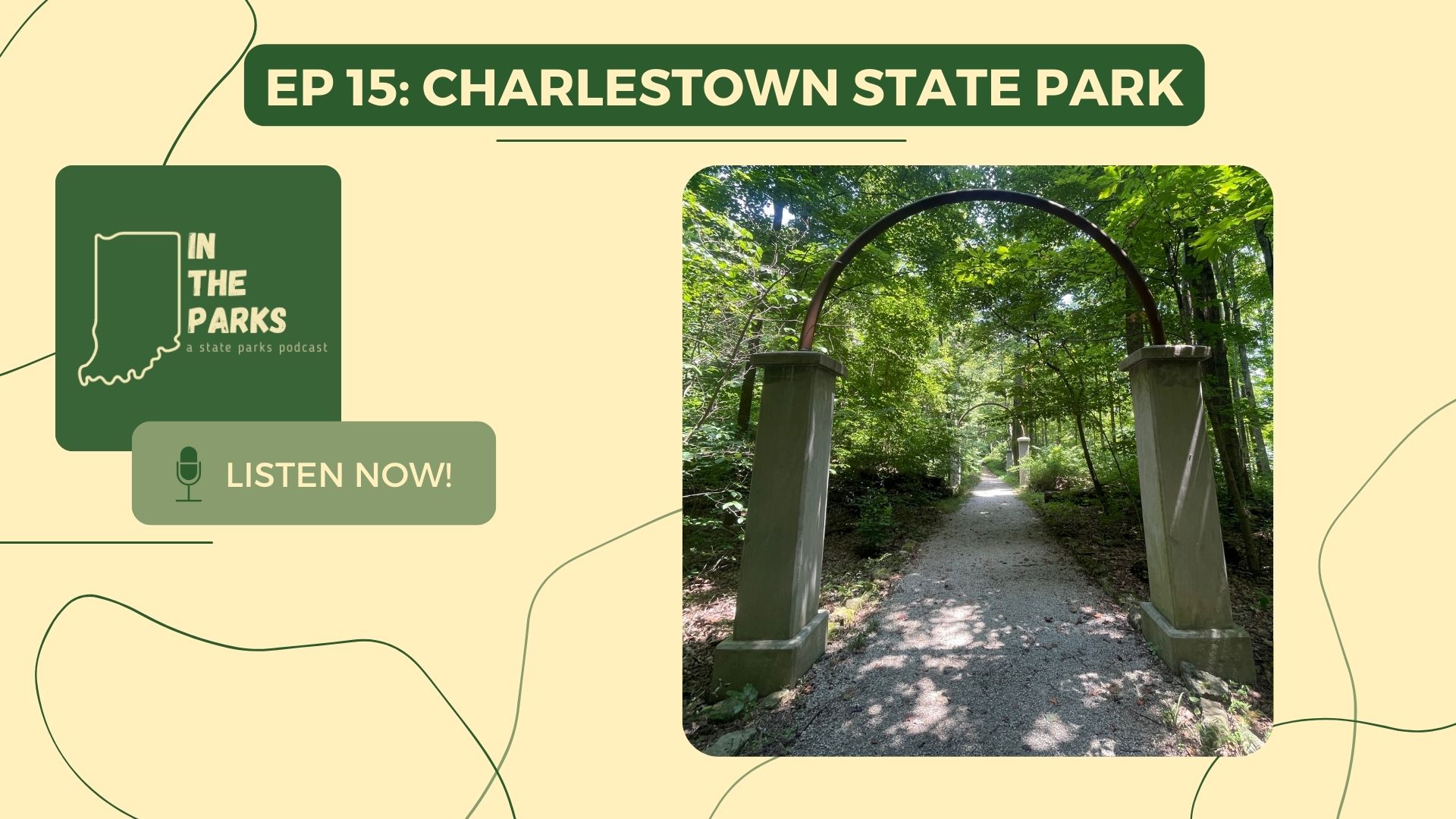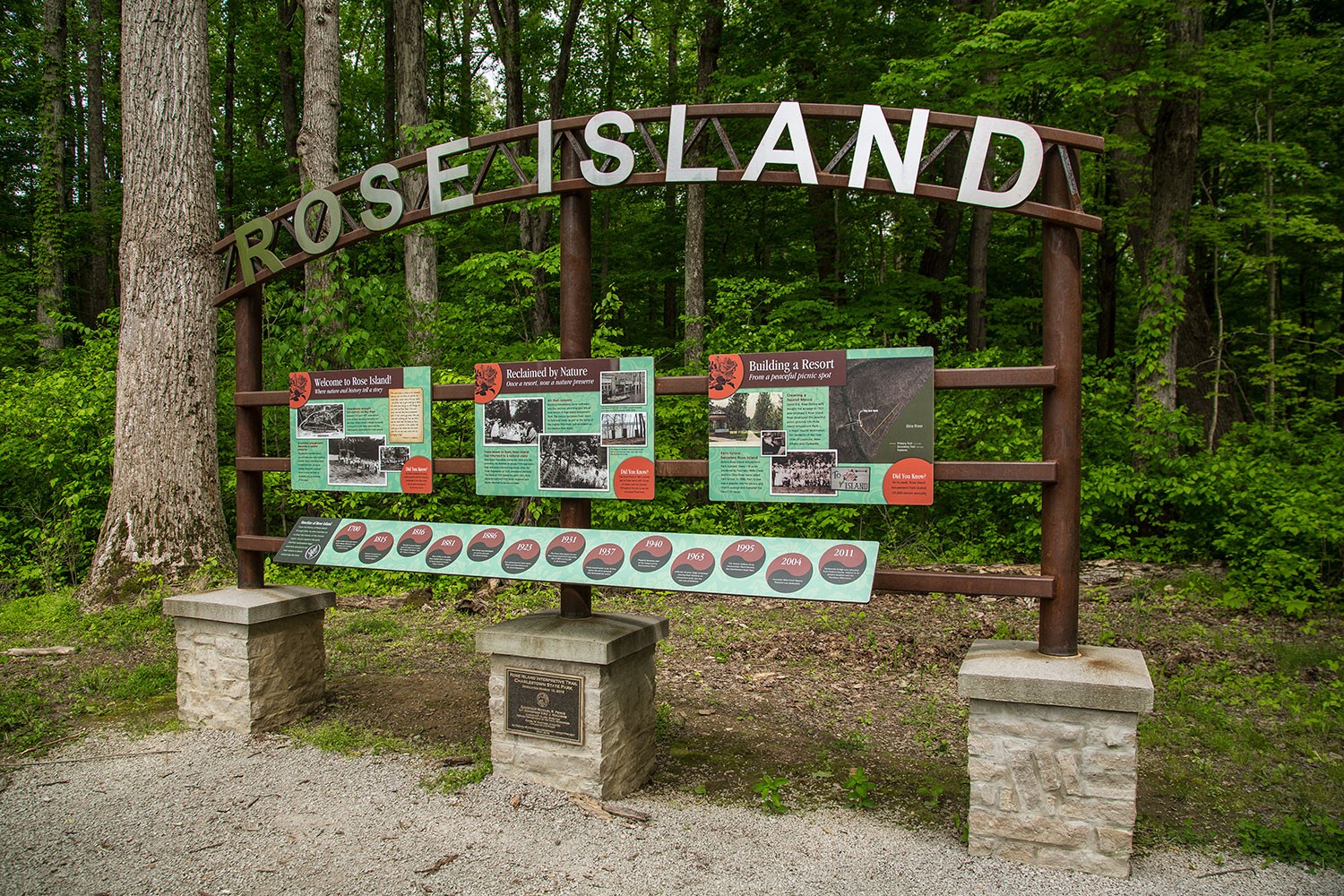Park Features
I’ve visited Mounds many times to hike, run trail races, and to check out their Christmas lights display! It’s a great park, and easy to do in a day or enjoy regularly. The trails are mostly accessible with some of them even paved. Although, if you’ve run a DINO trail race there, you know there are a couple very steep hills!
There's camping, a fantastic nature center, tons of green space, and a native flower garden. But the real reason this park is here has nothing to do with any of these amazing features. It all goes back to the mounds and the Bronnenberg family.
Ancient Mounds
The mounds for which Mounds State Park is named are a type of earthwork; a manmade structure intentionally created by layering clay, sand, gravel, and soil. You can find them all over the world.
On my IN the Parks podcast, I interviewed Mounds’ interpretive naturalist Kelley Morgan about the mounds, specifically the Great Mound which is on Trail 1. The interpretive naturalist position is awesome, and every state park has one. Their job is to help visitors make connections with the park by explaining the history and nature of each place. With a master's degree in North American Archaeology, Kelley was the perfect person to share about the mounds.
Kelley shared with me about the history of the Great Mound and explained its cultural significance. She told me when archaeologists studied the mounds back in the 80s, they discovered something unusual. “One of the things that they noticed as they were mapping is that the outer enclosure…has almost a serpentine top to it.” These rises and falls weren’t solely from erosion. They “were much more regular than what nature would have done.”
As the archaeologists worked one day in early summer, they started to put the pieces together. Kelley continued, “One of the things they noticed as the sun was setting is that the sun appeared to set in one of the depressions in this serpentine earthwork. And if you stood in the middle and looked towards where the sun was setting, just on the other side of the rim is another earthwork. It seems to be tracking the summer solstice.”
Another ridge aligned with the winter solstice, and the archaeologists realized they were standing inside a giant calendar! In the podcast, Kelley shared a few other amazing solar events the mounds tracked. It really blew my mind!
The Bronnenbergs: Protectors of the Mounds
Another important piece of history at Mounds is the Bronnenberg house. It was built in the 1850s and was owned by the Bronnenberg family until it was transferred to the state in 1929.
The Bronnenbergs contributed many things to the community while living in their beautiful brick home. But the most important thing they did was protect the mounds from being excavated. Kelley told me “they committed not to disturb or destroy the earthworks, and they actually did protect them.” Part of the reason they protected the mounds was because even in the 1800s, people understood they were culturally significant.
But the Bronnenbergs had another reason to protect the mounds. They were founding members of the American Spiritualist Movement, a group who tried to commune with spirits. It seems the Bronnenbergs sought a more direct connection with the supernatural and spiritualism appeal to them.
There's even a room in the house the park staff thinks was used for practicing their beliefs – a seance room on the second floor. In the podcast, Kelley gave me all the details for why she’s come to that conclusion, and it was fascinating! She said their participation in the American Spiritualist movement could be another reason why the Bronnenbergs protected the mounds.
Planning Your Visit
I enjoy Mounds any time of the year. In the summer, the campground is full and active, and the pollinator garden is buzzing. A fall walk through the woods when the leaves are changing is perfect! At Christmas, the Nights of Lights is a blast for kids. And in the spring, enjoy watching nature wake up after a cold winter!
After visiting Mounds, head in to Anderson and be sure you visit Frazier's Dairy Maid. I recommend the corn dog and soft serve twist in a cone!
Follow and Share
Want to follow my IN the Parks journey? Follow along on Instagram and Facebook, and be sure to share with a friend. I hope to see you IN the Parks!













